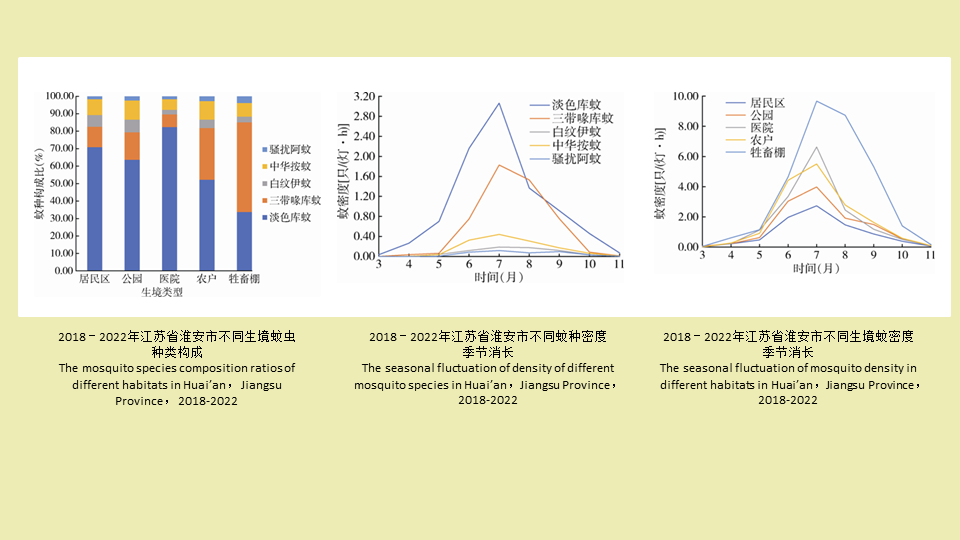 PDF(667 KB)
PDF(667 KB)


江苏省淮安市2018-2022年成蚊种群密度与季节消长监测分析
周小青, 陈夕鹏, 吕蒙蒙, 朱海洋, 罗晶, 唐勇, 蔡蓉
中国媒介生物学及控制杂志 ›› 2023, Vol. 34 ›› Issue (4) : 497-500.
 PDF(667 KB)
PDF(667 KB)
 PDF(667 KB)
PDF(667 KB)
江苏省淮安市2018-2022年成蚊种群密度与季节消长监测分析
 ({{custom_author.role_cn}}), {{javascript:window.custom_author_cn_index++;}}
({{custom_author.role_cn}}), {{javascript:window.custom_author_cn_index++;}}Adult mosquito population density and seasonal fluctuation in Huai'an, Jiangsu Province, China, 2018-2022
 ({{custom_author.role_en}}), {{javascript:window.custom_author_en_index++;}}
({{custom_author.role_en}}), {{javascript:window.custom_author_en_index++;}}
| {{custom_ref.label}} |
{{custom_citation.content}}
{{custom_citation.annotation}}
|
/
| 〈 |
|
〉 |